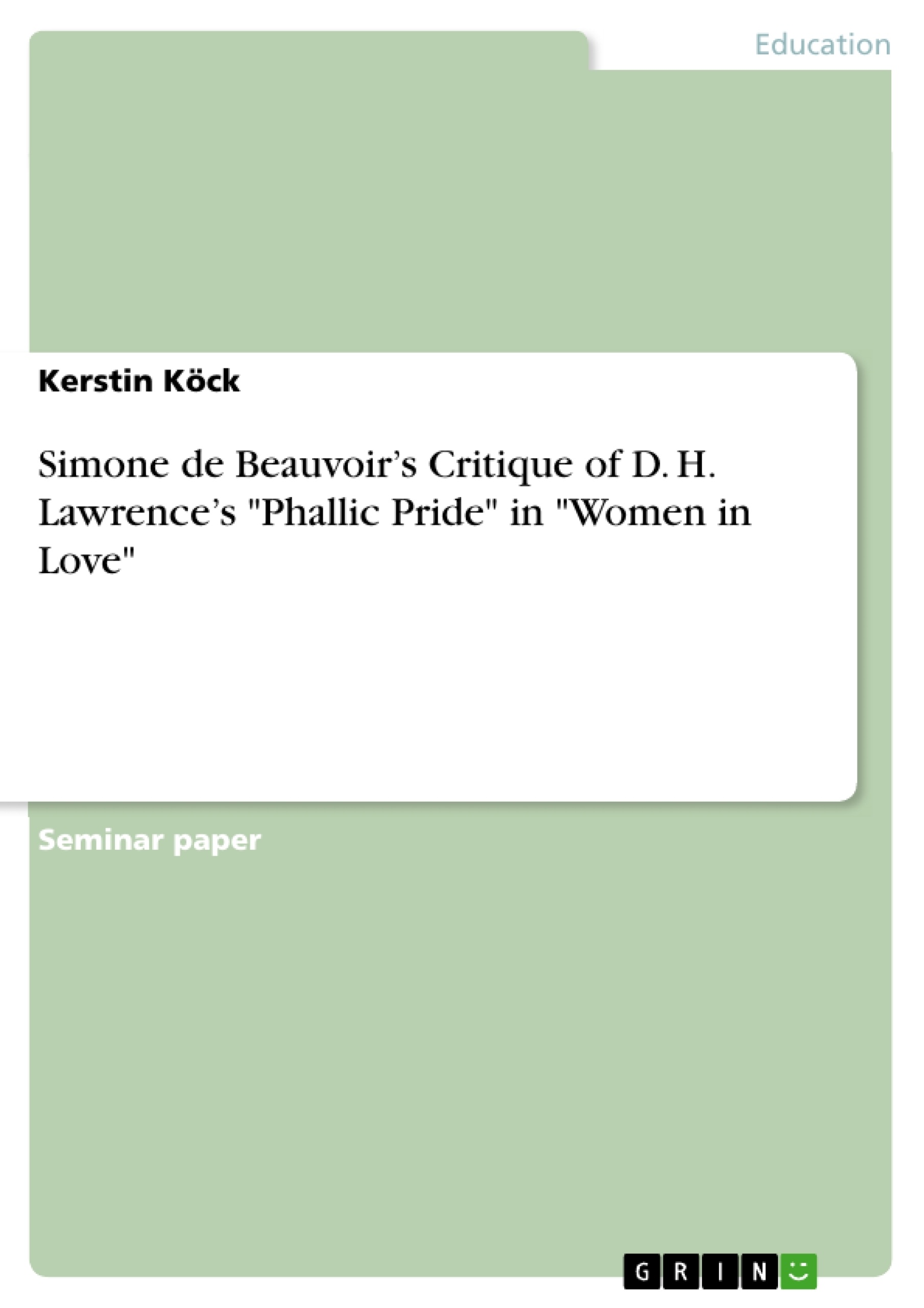The following term paper is going to take a closer look at D. H. Lawrence’s novel "Women in Love" and on his seemingly new “philosophy of the relationship of men and women”. The second part of the paper will deal with Simone de Beauvoir’s critique on D. H. Lawrence “Phallic Pride”. It will also include Betty Friedan’s "The Feminine Mystique" which was published in 1963. Both shall be examined as to the image of the presented roles of men and women.
The novel "Women in Love" was written by D. H. Lawrence and published in 1921.
The book was supposed to be sequel to the novel called "The Rainbow".
However, both novels were censured in the UK and in France because they were thought to be too sexually explicit.
The book "The Second Sex" by Simone de Beauvoir is an analysis of the oppression of women and is regarded a major work of feminist literature.
The book was published in 1949 and was highly influential for the revolution of 1968.
Simone de Beauvoir is regarded a pioneer of feminism.
Inhaltsverzeichnis (Table of Contents)
- Introduction
- Definition of the word “Phallus”
- D. H. Lawrence’s “new philosophy of the relationship between men and women”
- The Completeness of each individual being
- Balance of Powers
- The individuals should cast off themselves
- Simone de Beauvoir’s critique of D. H. Lawrence’s “Phallic Pride”
- Women are still dominated by men
- Women are still passive
- Women depend on men
- Women are emotional and men are rational
- Women should cast off themselves
Zielsetzung und Themenschwerpunkte (Objectives and Key Themes)
This term paper aims to analyze D. H. Lawrence's novel "Women in Love" and examine his seemingly new "philosophy of the relationship between men and women." It will then delve into Simone de Beauvoir's critique of Lawrence's "Phallic Pride," exploring her arguments against his views on the nature of male dominance and female subordination.
- D. H. Lawrence’s “new philosophy of the relationship between men and women”
- Simone de Beauvoir’s critique of D. H. Lawrence’s “Phallic Pride”
- The portrayal of male dominance and female subordination in "Women in Love"
- The concept of "Phallic Pride" and its implications for gender relations
- The role of feminist perspectives in analyzing literary works
Zusammenfassung der Kapitel (Chapter Summaries)
The first chapter introduces the novel "Women in Love" by D. H. Lawrence and the book "The Second Sex" by Simone de Beauvoir, highlighting their significance in feminist literature. It lays out the paper's focus on examining Lawrence's ideas about male-female relationships and Beauvoir's critique of these ideas. The second chapter defines the term "Phallus" in a literary context.
The third chapter analyzes Lawrence's "new philosophy" as presented in "Women in Love" through the characters of Birkin and Ursula. It discusses his concept of individual completeness, the notion of a balanced power dynamic in relationships, and the idea that individuals should "cast off themselves" to achieve a greater sense of unity.
The fourth chapter explores Simone de Beauvoir's critique of Lawrence's "Phallic Pride" by examining her arguments about women's continued subordination to men. It explores how Lawrence portrays women as passive, dependent, and emotionally driven, while highlighting his lack of a truly new philosophy regarding gender relations.
Schlüsselwörter (Keywords)
This term paper explores the themes of gender relations, female subordination, male dominance, "Phallic Pride," feminist critique, and the analysis of literary works. It examines the concepts of individual completeness, power dynamics, emotional and rational differences between genders, and the concept of "the Other" within a societal context.
- Quote paper
- Kerstin Köck (Author), 2010, Simone de Beauvoir’s Critique of D. H. Lawrence’s "Phallic Pride" in "Women in Love", Munich, GRIN Verlag, https://www.hausarbeiten.de/document/305760


